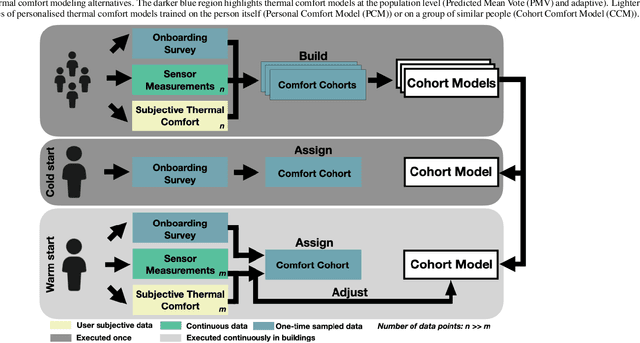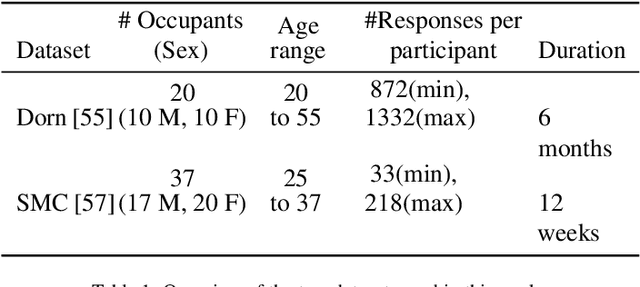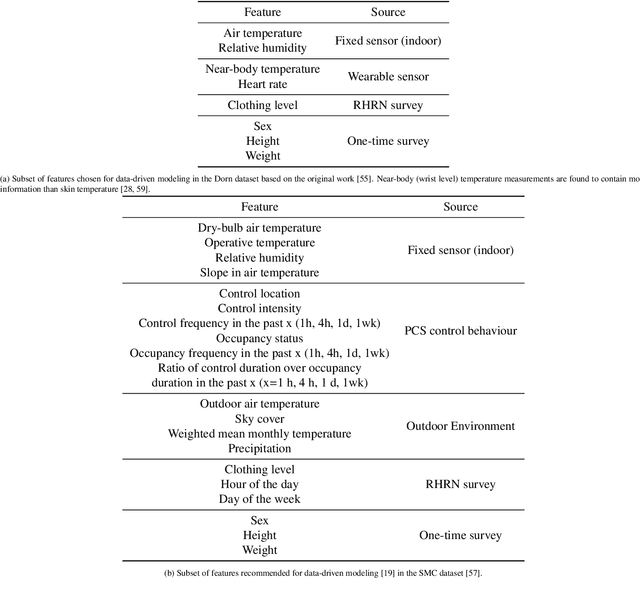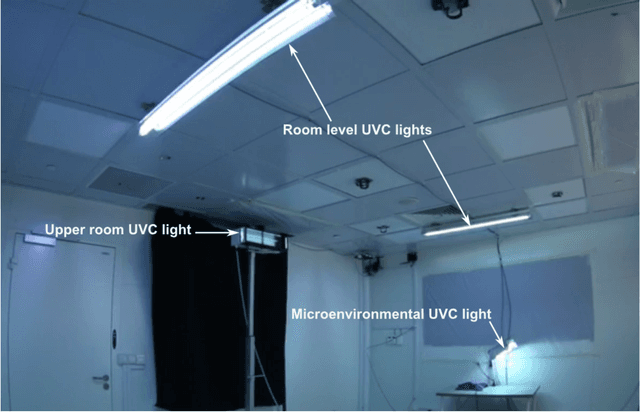Federico Tartarini
Cohort comfort models -- Using occupants' similarity to predict personal thermal preference with less data
Aug 05, 2022



Abstract:We introduce Cohort Comfort Models, a new framework for predicting how new occupants would perceive their thermal environment. Cohort Comfort Models leverage historical data collected from a sample population, who have some underlying preference similarity, to predict thermal preference responses of new occupants. Our framework is capable of exploiting available background information such as physical characteristics and one-time on-boarding surveys (satisfaction with life scale, highly sensitive person scale, the Big Five personality traits) from the new occupant as well as physiological and environmental sensor measurements paired with thermal preference responses. We implemented our framework in two publicly available datasets containing longitudinal data from 55 people, comprising more than 6,000 individual thermal comfort surveys. We observed that, a Cohort Comfort Model that uses background information provided very little change in thermal preference prediction performance but uses none historical data. On the other hand, for half and one third of each dataset occupant population, using Cohort Comfort Models, with less historical data from target occupants, Cohort Comfort Models increased their thermal preference prediction by 8~\% and 5~\% on average, and up to 36~\% and 46~\% for some occupants, when compared to general-purpose models trained on the whole population of occupants. The framework is presented in a data and site agnostic manner, with its different components easily tailored to the data availability of the occupants and the buildings. Cohort Comfort Models can be an important step towards personalization without the need of developing a personalized model for each new occupant.
Automated decontamination of workspaces using UVC coupled with occupancy detection
Jan 26, 2021



Abstract:Periodic disinfection of workspaces can reduce SARS-CoV-2 transmission. In many buildings periodic disinfection is performed manually; this has several disadvantages: it is expensive, limited in the number of times it can be done over a day, and poses an increased risk to the workers performing the task. To solve these problems, we developed an automated decontamination system that uses ultraviolet C (UVC) radiation for disinfection, coupled with occupancy detection for its safe operation. UVC irradiation is a well-established technology for the deactivation of a wide range of pathogens. Our proposed system can deactivate pathogens both on surfaces and in the air. The coupling with occupancy detection ensures that occupants are never directly exposed to UVC lights and their potential harmful effects. To help the wider community, we have shared our complete work as an open-source repository, to be used under GPL v3.
 Add to Chrome
Add to Chrome Add to Firefox
Add to Firefox Add to Edge
Add to Edge